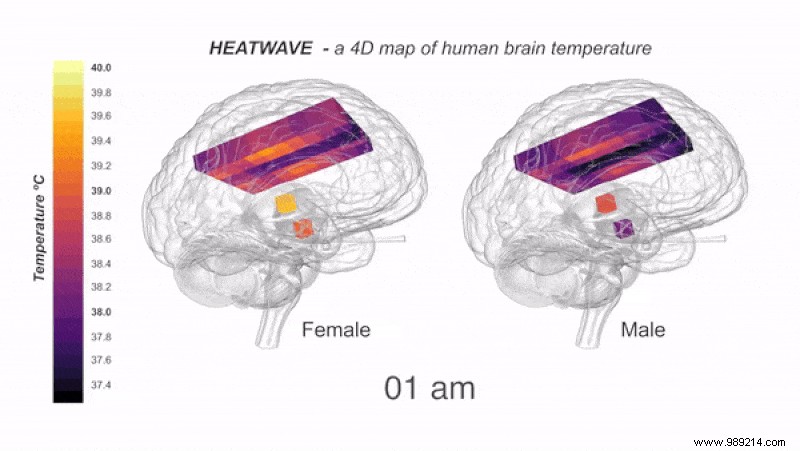A team claims to have been able to produce the first maps of brain temperatures of healthy people. Their finding suggests that brain temperature is higher than previously thought. It also varies depending on several factors, such as time of day and brain region.
Abnormal body temperature has been recognized as a sign of disease for thousands of years. Temporal and spatial dynamics of temperature also provide additional diagnostic information. Disrupted circadian rhythms or local heating at sites of injury or infection are examples.
Brain temperature is rarely measured directly, as the methods needed are usually invasive . Most of what we know about brain heat comes from studies with hospitalized patients, because it's much easier to monitor continuously.
In practice, and without this lack of data, it was assumed until now that the temperature of the brain corresponded to the core of the body. New work published in the journal Brain shows that this is not the case .
In recent years, new techniques have made it much easier to noninvasively take brain temperatures. Recently, a team from the Molecular Biology Laboratory of the Medical Research Council (in the United Kingdom) was able to produce a 4D temperature map (showing changes in space and time) of the healthy human brain.
As part of this work, the researchers analyzed brain temperature data from two groups of people. Some were critical care patients whose brain had been scanned as part of an earlier project studying traumatic brain injury. Others were healthy volunteers . The temperatures of the two groups were taken during one day:morning, afternoon and evening.
Overall, the average brain temperature for both groups was around 38.5°C , which was higher than their average human temperature taken orally.

On the other hand, there was a lot of variability in the readings. The temperature was generally lower at night and higher in deep regions of the brain than near the surface (over 40°C), for example. Similarly, women and older people also tended to have higher brain temperatures.
These new results could have important implications. Indeed, it has long been assumed that having a "hot brain" may increase the risk of serious complications. However, the team of researchers here observed that temperatures could reach 40.9°C in the healthiest subjects. Even in critically ill patients, researchers have not isolated any direct link between higher brain temperature and their chances of survival.
The evolution of brain temperature throughout the day, on the other hand, seemed to be more predictive of their survival . Generally speaking, those whose temperature did not drop as expected at night and did not rise as expected the rest of the day were more likely to suffer from health problems. However, these observations will have to be the subject of further work to fully understand this phenomenon.